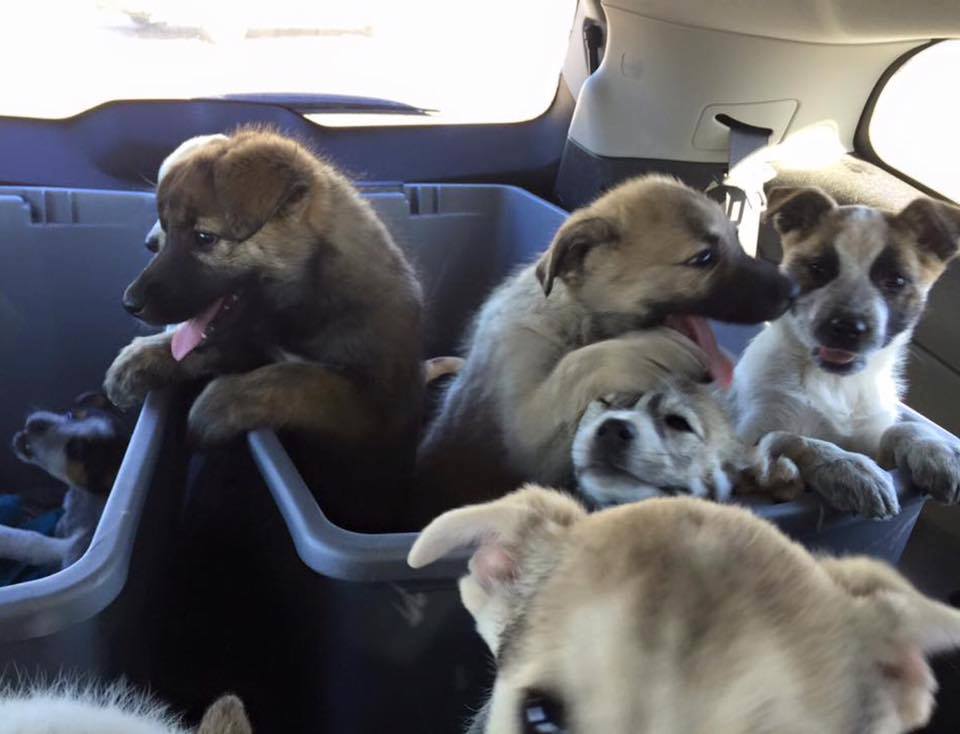
Puppies available for adoption at Williamson County Regional Animal Shelter.
The commercial breeding industry is fear mongering about a shortage of millions of puppies to meet demand over the next 10 years and they are not alone. Others have taken a more measured tone, but likewise are suggesting that animal advocates need to embrace some commercial breeding to address what they claim will be an upcoming shortage in dogs. Nonsense.
Despite more widespread and affordable sterilization, puppies are in no danger of disappearing from the U.S.; there are still a million dogs or more dying for a home in shelters every year; we can transport animals in and out of communities to meet demand, including community dogs and dogs from other countries if the need arises; and of course, we can do a better job of marketing the ethics and benefits of adopting young adult, adult, and mature animals to change community preferences.
Given the increasing success of the No Kill movement, the cliché that no one will adopt out certain breeds, adults, or animals with impediments has been thoroughly debunked–except by shelter directors looking to justify their own failures. While the vast majority of dogs entering shelters are young and have no impediments to adoption, even those who do are finding homes in those cities were the shelter has embraced a culture of lifesaving. Animals are being saved and finding homes, regardless of perceived “breed,” whether they are young or old, healthy or sick, unweaned, injured, or traumatized.
So if the combination of sterilization and proactive, innovative, and competent sheltering allows a community to drop intakes at local shelters significantly enough so that local demand for animals can no longer be met, the community can begin importing animals from high-kill rate jurisdictions, saving those lives, too, as some shelters in No Kill communities are currently doing. Until all communities become No Kill, this is a very good thing to have happen.
In short, the sky is in no danger of falling.
So what is motivating this doom and gloom scenario, at least among the commercial breeding industry? Pet Business magazine writes that, “An increasing number of local pet sale bans and a steady decline in the number of commercial breeders have undoubtedly decreased the supply of healthy, well-bred puppies available in the marketplace, and without some intervention, the trend shows no sign of slowing.” (Even if communities don’t ban the sale of these animals, if more Americans adopt dogs and cats from shelters rather than acquiring them from alternative sources like pet stores, demand for commercially bred animals will necessarily decline, leading in some cases to closure of pet stores and breeders).
If this continues, they warn, “ownership of a healthy dog [will] become[ ] a luxury, so too will the ownership of a healthy pet store.” Not surprisingly, they are calling on municipalities to stop banning the retail sale of purposely-bred animals as many cities, such as Palm Springs, CA and Camden County, NJ., have done. In the latter, a local pet store reliant on puppy mill dogs closed and reopened with a new mission: rescuing puppies from the street, from shelters, and even from U.S. territories, like Puerto Rico. That, too, is a good thing to have happen–unless you are a puppy mill. In other words, follow the money.
As more cities ban the sale of commercially bred animals in pet stores, those stores and the mills that supply them have been filing lawsuits in order to protect industry profits and losing. Federal Judges in Rhode Island, Arizona, and Illinois have upheld local laws that ban the sale of commercially-bred dogs and cats from pet stores. Pet stores in cities such as Chicago and Phoenix are now only allowed to adopt out rescued animals from shelters and rescue groups with which they partner.
These laws were passed based on concerns about the treatment of dogs in puppy mills and in order to increase the number of rescued animals in need of homes who find them. They also strike to the heart of so much animal suffering: their commodification. When there is profit to be made on the backs of animals, history shows that those backs are often strained and broken.
Indeed, puppy mills fuel inbreeding, provide minimal to no veterinary care, lack of adequate food and shelter, lack of human socialization, overcrowded cages, and cause neglect, abuse, and the killing of animals when they are no longer profitable. To protect dogs and truly promote healthy communities, America should end the commercial breeding of dogs, and all the harm that doing so entails.
————-
Have a comment? Join the discussion by clicking here.